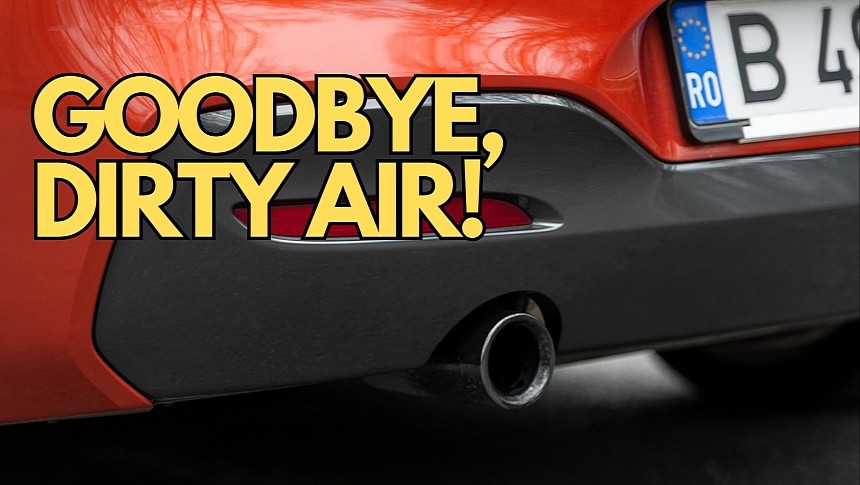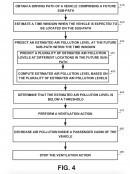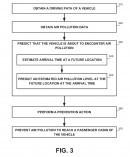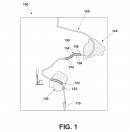Air pollution has become a global problem, and statistics show that the air we breathe is responsible for over 11 percent of all deaths globally. The World Health Organization claims that no less than 99 percent of the global population breathes air that contains a high level of pollutants, such as particulate matter, carbon monoxide, ozone, and nitrogen dioxide.
Vehicle emissions have long been considered among the main causes of air pollution, and carmakers have invested aggressively in technology for cleaner engines. The push for zero-emission vehicles is part of the strategy, as new regulations worldwide call for car manufacturers to drop combustion engines and embrace electric motors.
Meanwhile, the entire industry is fighting air pollution, including technology companies. If you've been keeping an eye on the auto news, you probably know already that companies like Apple and Xiaomi are working on their own cars, planning to compete against traditional carmakers with new-generation vehicles focused heavily on technology.
Others embrace a different strategy and focus exclusively on services to power smarter vehicles. Google is one of them, and its latest idea would help reduce air pollution's impact on drivers and car passengers.
A patent called "reactive operations to air pollution" describes a way to determine the air pollution a driver would be exposed to and a series of actions to reduce it.
Google starts by acknowledging that "air pollution is one of the biggest threats for the environment," adding that its system works by determining the air quality of drivers' next destination.
As a result, it all starts with Google knowing precisely where you go. The company explains that its system must obtain a driving patch of a vehicle, which theoretically means that you must provide an address in Google Maps to let the search giant know where you're heading. Based on this information, Google can look for air pollution data along the route and the destination.
This step is simple, as the system can connect to online services providing air quality data and analyze historical data to determine if the driver is expected to be exposed to air pollution. If the configured route gets the vehicle through a polluted region, Google's system can request additional data from Google Maps, including the ETA.
The analysis' purpose is to determine with a high level of accuracy if, when, and for how long you are expected to encounter air pollution. For example, Google Maps can provide the estimated time of arrival to the destination, so the system can check the historical air quality data to predict if the air will be clean when you arrive at the address.
However, Google's system tries to generate similar predictions for the entire route, so it knows precisely when and where you're likely to encounter polluted air.
Based on the determined data, Google's technology can prepare a series of prevention actions.
It all starts by closing the car windows when the vehicle approaches a location where the air pollution levels are predicted to exceed a defined threshold. This way, the dirty air would no longer get in the car, with the system also turning on the climate control function and enabling the air recirculation operation (to block the dirty air from entering the vehicle). All operations would be reversed when the vehicle exists in an area where high pollution is expected.
If the car has already entered a region with polluted air, Google's system can turn on the internal air purifiers, assuming such equipment exists in the cabin. The technology can monitor the air quality in the cabin based on internal sensors and keep the air purifier enabled until the pollution level drops below a threshold.
In some cases, the system can combine all these prevention methods, so the system can close the windows, start the air conditioning system, and enable the air purifiers to ensure the dirty air's impact is minimal.
Eventually, the system can also instruct the navigation route to look for routes with less pollution, providing the driver with alternatives that wouldn't require prevention methods. It can also enable a new "cleaner" route automatically if it doesn't produce a significant delay to the destination.
The whole concept is based on a simple principle. Google must always know where you go to predict the AQI at any point along the route. Privacy advocates would probably consider this requirement a major concern, but Google already collects such information from Google Maps, so the company has this data. Additionally, an Android Automotive-powered car, where Google's services come built-in, requires location access to provide more advanced functionality.
Google Maps in an Android Automotive vehicle can monitor the battery range and suggest charging stops if the battery level drops below a level that doesn't allow the driver to arrive at the destination. It can also reconfigure routes to improve the range.
Meanwhile, the entire industry is fighting air pollution, including technology companies. If you've been keeping an eye on the auto news, you probably know already that companies like Apple and Xiaomi are working on their own cars, planning to compete against traditional carmakers with new-generation vehicles focused heavily on technology.
Others embrace a different strategy and focus exclusively on services to power smarter vehicles. Google is one of them, and its latest idea would help reduce air pollution's impact on drivers and car passengers.
A patent called "reactive operations to air pollution" describes a way to determine the air pollution a driver would be exposed to and a series of actions to reduce it.
Google starts by acknowledging that "air pollution is one of the biggest threats for the environment," adding that its system works by determining the air quality of drivers' next destination.
This step is simple, as the system can connect to online services providing air quality data and analyze historical data to determine if the driver is expected to be exposed to air pollution. If the configured route gets the vehicle through a polluted region, Google's system can request additional data from Google Maps, including the ETA.
The analysis' purpose is to determine with a high level of accuracy if, when, and for how long you are expected to encounter air pollution. For example, Google Maps can provide the estimated time of arrival to the destination, so the system can check the historical air quality data to predict if the air will be clean when you arrive at the address.
However, Google's system tries to generate similar predictions for the entire route, so it knows precisely when and where you're likely to encounter polluted air.
It all starts by closing the car windows when the vehicle approaches a location where the air pollution levels are predicted to exceed a defined threshold. This way, the dirty air would no longer get in the car, with the system also turning on the climate control function and enabling the air recirculation operation (to block the dirty air from entering the vehicle). All operations would be reversed when the vehicle exists in an area where high pollution is expected.
If the car has already entered a region with polluted air, Google's system can turn on the internal air purifiers, assuming such equipment exists in the cabin. The technology can monitor the air quality in the cabin based on internal sensors and keep the air purifier enabled until the pollution level drops below a threshold.
In some cases, the system can combine all these prevention methods, so the system can close the windows, start the air conditioning system, and enable the air purifiers to ensure the dirty air's impact is minimal.
The whole concept is based on a simple principle. Google must always know where you go to predict the AQI at any point along the route. Privacy advocates would probably consider this requirement a major concern, but Google already collects such information from Google Maps, so the company has this data. Additionally, an Android Automotive-powered car, where Google's services come built-in, requires location access to provide more advanced functionality.
Google Maps in an Android Automotive vehicle can monitor the battery range and suggest charging stops if the battery level drops below a level that doesn't allow the driver to arrive at the destination. It can also reconfigure routes to improve the range.









